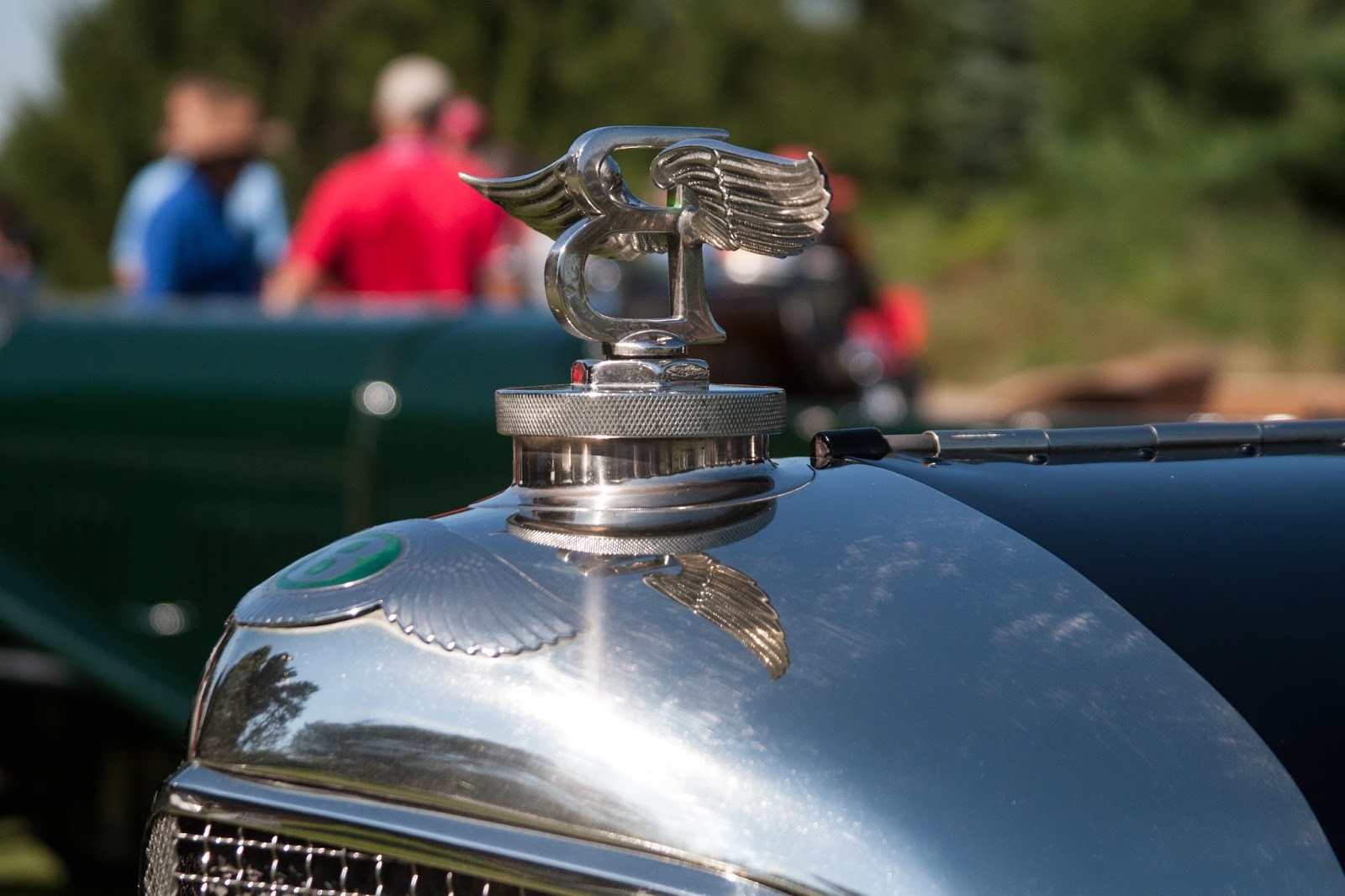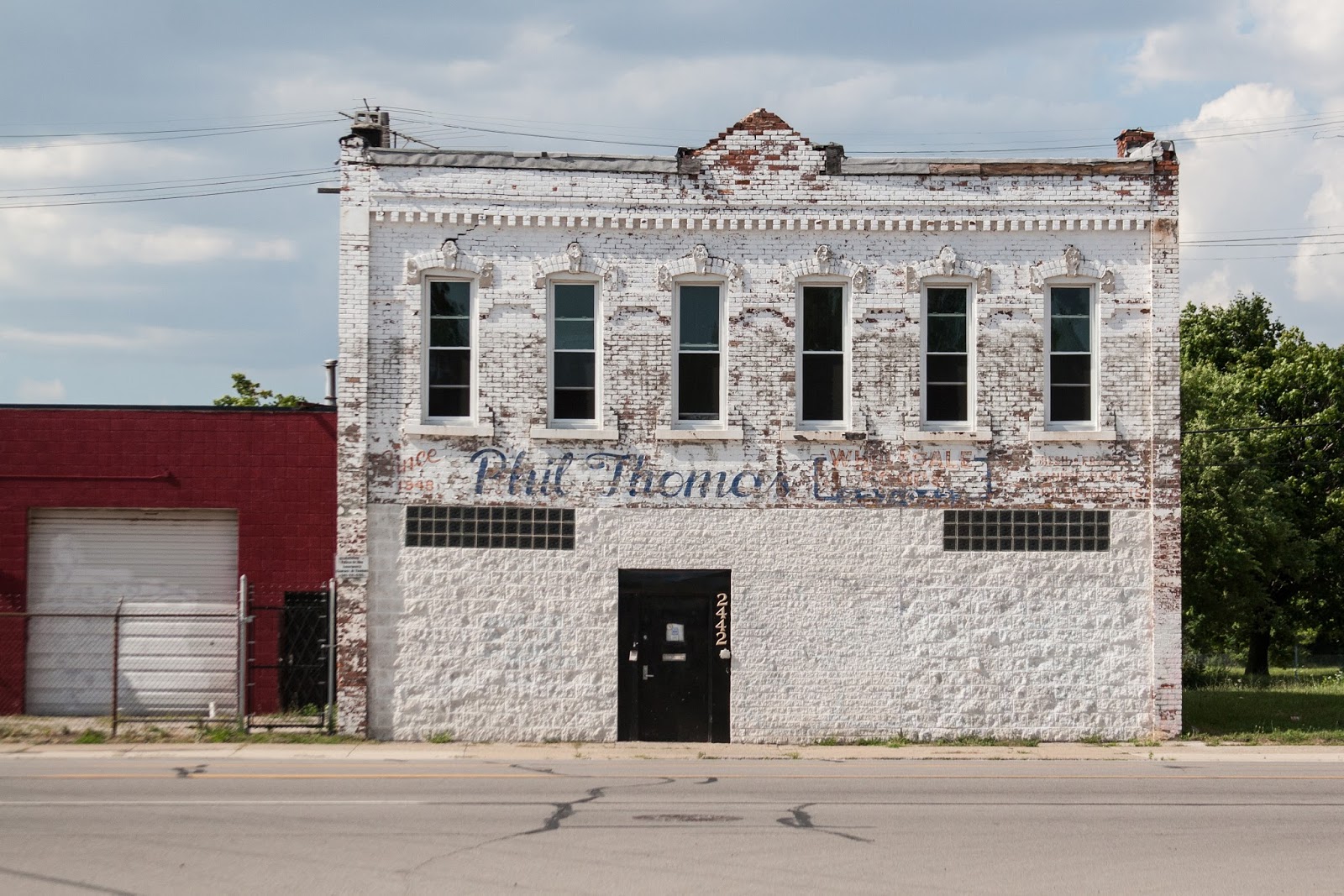I thought the woman was going to have a stroke when I said I was really looking forward to the hearse exhibit at the Concours d'Elegance of America. She was giving me a tour of the Plymouth Historical Museum. The small Michigan town was host to its own slice automotive industry, after all. But hearses? She couldn't comprehend why I was so interested.
The hearses were only the beginning of what made this Concours special, though. The hearse category contained about ten examples of death chariots, from the late-Victorian horse-drawn era to the dazzling late-50s. The last car in the row was a Cadillac Landaulet, which sported all of the dazzle and excess that was late-50s Cadillac. It had the same huge tail fins and torpedo tail lights that graced the 1959 Eldorado. In fact, the same Cadillac also featured a special slide-out table for easy coffin loading, but even it wasn't exempt from decoration.
Such niches in automotive enthusiasm have rarely been explored in any car event, let alone a Concours. The culture of the Concours is wrapped up in the shiny, dazzling, dust-free excess of the upper-upper class. But this particular Concours broke away from that, in more ways than just hearses.
One of the biggest struggles within the car enthusiast community is the age disparity. "How do we get kids interested in cars?" is a question that's often thrown around. Even worse is the "kids just don't care about cars" nowadays troupe. This is of course a fallacy. But disparity between car enthusiasts is still a real issue. Unless you're a weirdo like me, who is interested in obscure Italian cars like the Fiat 8V, there's not much of interest, especially when a vast majority of show cars were built quarters-of-centuries before you were born.
Even for an (I'd like to think) open-minded enthusiast like myself, it's hard to connect with cars like the Duesenburg SJ or an Auburn Boattail Speedster. I can appreciate these cars for their fantastic engineering, and even their groundbreaking design, but I just don't connect to them as well. I feel like it's the same way for the youngest generation of car enthusiast.
When I was in the hotel lobby on Friday, I overheard a group of high school kids talking about cars. A Concours volunteer walked by and they immediately began asking "is the LaFerrari going to be here? What about the 918?" Thankfully for them, both cars were on the lawn on Sunday morning, and I'm glad the cars were there too.
Right up front, there was a rotunda of modern exotics: an Alfa 8C, a Lamborghini Diablo VT, the 918, the LaFerrari, and the crowds were huge.
I'll be the first to say I'm not a huge fan of contemporary hyper-exotics. For me, a lot of the flair is too much; it's overdone. But I remember what I liked back in high school, and I understand. These cars have always been the bedroom posters, and there they were at the Concours, just as promised.
So the organizers had the clincher, but they were still free to diversify even further. Early Japanese Sports Cars is not a category I expected to find in the cradle of the American automotive industry. Not when the domestic cars I spotted on the highways and city streets drastically outnumbered the imports. Not when I saw a bumper sticker that said "Be American, buy American ('else yer a socialist Obama-lover)" in the Henry Ford complex.
There were only a handful of cars in this category, but they were all supremely interesting. But these weren't cars that were entirely out of reach. They weren't one-of-a-kind; there was a Datsun 240Z. Furthermore, they weren't a hundred years old. They're cars that people my dad's age remember seeing on the road. And they're another group of cars that aren't often represented at car shows of this caliber.
In addition to the Japanese Sports Cars and the Hearses, there were Bonneville Salt Flats cars, 1960s Pro-Stock Hot Rods, Suburban Town Cars, and European Post-war cars, just to name a few.
It is said that over 10,000 people attended last year's Concours d'Elegance of America. I would be staggered if the number wasn't larger this year. I saw all kinds of people who turned out in the 90 degree Michigan summer morning to look at fantastic cars. I saw the kind of interactions that give me hope for a new generation of car enthusiasts. My new generation, ideally, is one that is interested in cars at more than face value. I want kids to be intrigued by cars, like I'm intrigued, whether it be their interesting historical significance, stunning design, or groundbreaking technology.
This Concours was different from all the others I've been to in the past. It fostered an environment of learning, teaching, and acceptance of all different levels of enthusiasm: from a priceless Austin, to a Superlite SLC, to an Izuzu 112. Detroit may be the cradle of the American car industry, but it enthusiasm seems to be all-inclusive.
See more of my photos from The Concours d'Elegance of America below.
The hearses were only the beginning of what made this Concours special, though. The hearse category contained about ten examples of death chariots, from the late-Victorian horse-drawn era to the dazzling late-50s. The last car in the row was a Cadillac Landaulet, which sported all of the dazzle and excess that was late-50s Cadillac. It had the same huge tail fins and torpedo tail lights that graced the 1959 Eldorado. In fact, the same Cadillac also featured a special slide-out table for easy coffin loading, but even it wasn't exempt from decoration.
 |
| Hearses on display ranged from a horse-drawn, Victorian jewelry box to a ritzy 1959 Cadillac Landaulet. |
Such niches in automotive enthusiasm have rarely been explored in any car event, let alone a Concours. The culture of the Concours is wrapped up in the shiny, dazzling, dust-free excess of the upper-upper class. But this particular Concours broke away from that, in more ways than just hearses.
 |
| The classic "flying B" hood ornament is a mainstay at any concourse event. |
One of the biggest struggles within the car enthusiast community is the age disparity. "How do we get kids interested in cars?" is a question that's often thrown around. Even worse is the "kids just don't care about cars" nowadays troupe. This is of course a fallacy. But disparity between car enthusiasts is still a real issue. Unless you're a weirdo like me, who is interested in obscure Italian cars like the Fiat 8V, there's not much of interest, especially when a vast majority of show cars were built quarters-of-centuries before you were born.
 |
| Cars like this Austin Model 60 sedan are striking and historically-significant, but not especially appealing to the newest generation of car enthusiast. |
Even for an (I'd like to think) open-minded enthusiast like myself, it's hard to connect with cars like the Duesenburg SJ or an Auburn Boattail Speedster. I can appreciate these cars for their fantastic engineering, and even their groundbreaking design, but I just don't connect to them as well. I feel like it's the same way for the youngest generation of car enthusiast.
When I was in the hotel lobby on Friday, I overheard a group of high school kids talking about cars. A Concours volunteer walked by and they immediately began asking "is the LaFerrari going to be here? What about the 918?" Thankfully for them, both cars were on the lawn on Sunday morning, and I'm glad the cars were there too.
Right up front, there was a rotunda of modern exotics: an Alfa 8C, a Lamborghini Diablo VT, the 918, the LaFerrari, and the crowds were huge.
I'll be the first to say I'm not a huge fan of contemporary hyper-exotics. For me, a lot of the flair is too much; it's overdone. But I remember what I liked back in high school, and I understand. These cars have always been the bedroom posters, and there they were at the Concours, just as promised.
 |
| A pair of Alfas: the new 4C and the 8C from 2009. |
So the organizers had the clincher, but they were still free to diversify even further. Early Japanese Sports Cars is not a category I expected to find in the cradle of the American automotive industry. Not when the domestic cars I spotted on the highways and city streets drastically outnumbered the imports. Not when I saw a bumper sticker that said "Be American, buy American ('else yer a socialist Obama-lover)" in the Henry Ford complex.
There were only a handful of cars in this category, but they were all supremely interesting. But these weren't cars that were entirely out of reach. They weren't one-of-a-kind; there was a Datsun 240Z. Furthermore, they weren't a hundred years old. They're cars that people my dad's age remember seeing on the road. And they're another group of cars that aren't often represented at car shows of this caliber.
 |
| A 1970 Mitsubishi Colt Galant GTO (above) and a 1966 Hino Contessa 1300S are two Japanese sports cars that are truly one-of-a-kind in the US; both cars are the only known examples here. |
In addition to the Japanese Sports Cars and the Hearses, there were Bonneville Salt Flats cars, 1960s Pro-Stock Hot Rods, Suburban Town Cars, and European Post-war cars, just to name a few.
It is said that over 10,000 people attended last year's Concours d'Elegance of America. I would be staggered if the number wasn't larger this year. I saw all kinds of people who turned out in the 90 degree Michigan summer morning to look at fantastic cars. I saw the kind of interactions that give me hope for a new generation of car enthusiasts. My new generation, ideally, is one that is interested in cars at more than face value. I want kids to be intrigued by cars, like I'm intrigued, whether it be their interesting historical significance, stunning design, or groundbreaking technology.
 |
| The interior of a 1953 Fiat 8V Supersonic. It's almost plebian compared to the car's exterior design. |
 |
| An ultra-rare Tucker 48 sedan. The Chicago car firm only produced 51 cutting-edge cars before mysteriously closing its doors. |
 |
| A road-going version of the Lancia Stratos rally car. |
This Concours was different from all the others I've been to in the past. It fostered an environment of learning, teaching, and acceptance of all different levels of enthusiasm: from a priceless Austin, to a Superlite SLC, to an Izuzu 112. Detroit may be the cradle of the American car industry, but it enthusiasm seems to be all-inclusive.
See more of my photos from The Concours d'Elegance of America below.




















































































